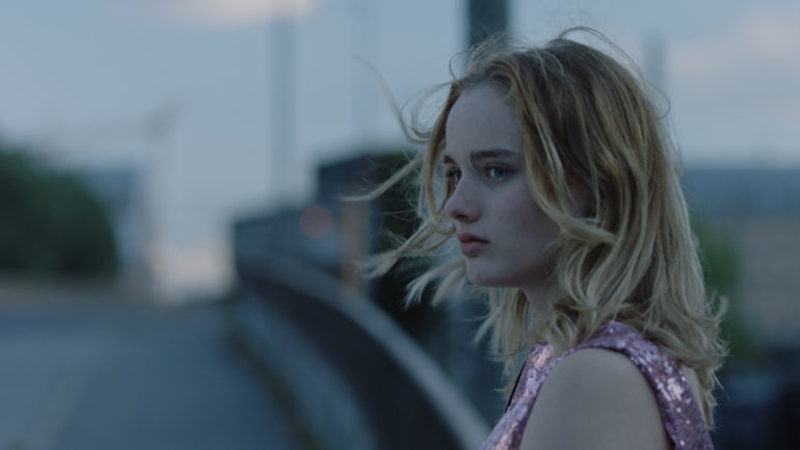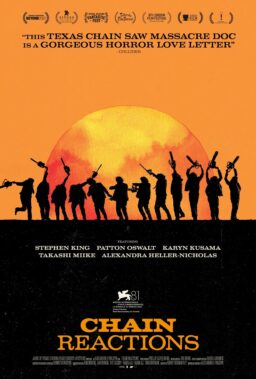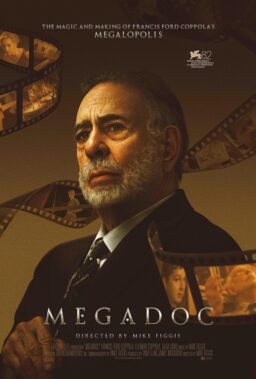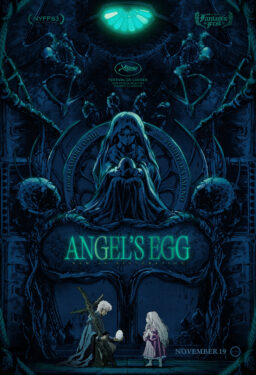Iceland’s first art house cinema, Bíó Paradís (Cinema Paradise), is the cozy central venue of the Reykjavík International Film Festival. Upon opening for business in 2010, the theater has screened the latest independent productions from Europe and the U.S. as well as Icelandic narratives, documentaries and shorts. Covering one of the lobby walls is an eye-popping assortment of custom-made posters for each classic movie screened at the theater’s Svartir Sunnudagar (Black Sunday) retrospectives. The witty designs of these posters, some of which can be viewed here, resemble Criterion covers produced by Mad Magazine. I especially loved the mash-up of “Star Wars” and “The Night of the Hunter,” pasting the faces of Lillian Gish and Robert Mitchum onto Princess Leia and Luke Skywalker, respectively. Gish’s immortal line, “It’s a hard world for little things,” certainly applies to one of the most haunting pictures at RIFF 2018, Norwegian writer/director Camilla Strøm Henriksen’s debut feature, “Phoenix.” Newcomer Ylva Bjørkaas Thedin delivers a deeply moving performance as Jill, a girl on the cusp of celebrating her 14th birthday, who has taken on the role of her family’s sole parental figure.
Like Ola, the astoundingly mature child single-handedly keeping her family afloat in Anna Zamecka’s great Polish documentary, “Communion,” Jill must perform all the duties normally reserved for adults, serving as the primary caregiver for both her younger brother, Bo (Casper Falck-Løvås), and her unstable mother, Astrid (Maria Bonnevie). The film’s superbly claustrophobic first half takes place within the shadowy confines of the family’s apartment, as Jill goes about her daily routine of coaxing Astrid out of bed, encouraging her to embrace a new job opportunity, reprimanding her for staying out late drinking and finally wrestling her to the ground after she endures another meltdown. It’s no coincidence that Jill happens to be watching “Pan’s Labyrinth” prior to this frightening episode, since her journey is fraught with peril that threatens to unspool into surreal fantasy. Though Astrid’s mental illness is never specified, Bonnevie’s wide eyes convey the desperation of her character as she strains to keep her volatile temper in check. Any given interaction can swiftly derail into chaos, with Astrid only finding temporary solace in crafting artworks, some of which threaten to take on a life of their own. Henriksen is sparing in her use of horror imagery, thus making their inclusion all the eerier, such as when the tendrils of a painting come alive, or when a John Carpenter-esque creature scuttles across the floor. Spawning each of these nightmares is the young protagonists’ palpable fear of being trapped in a world indifferent to their needs. No matter how much Astrid is loved by her children, she grimly informs them, “You aren’t enough.”
After a galvanizing turn of events, traces of psychosis start to emerge in Jill’s own behavior, as she does everything in her power to protect her brother, who sees through all of his sister’s charades. Eventually their estranged father (Sverrir Gudnason) enters the picture, providing them with a dreamlike escape made all the more painful by its fleeting nature. Any hope that can be found in this story is personified by Jill herself, who is the phoenix rising from the ashes left by two parents unable to deal with the life they brought into the world. Her fierce self-sufficiency in on par with Jennifer Lawrence’s heroine in “Winter’s Bone,” and Thedin is exceptionally skilled at conveying emotions that her character finds too difficult to articulate, even early on while sitting next to a cute guy in class. An educational movie about rainforests projected onto the screen before them makes it appear as if the pair are being doused with water, externalizing the bracing sensation of Jill’s budding crush. It’s a brief yet potent example of Henriksen’s mastery as a visual storyteller. When Festival Director Hrönn Marinósdóttir founded RIFF with a group of cinema experts in 2004, his main desire was to champion fresh faces in cinema, reserving the annual event’s top prize—the Golden Puffin (shaped after the signature animal of Iceland)—for films by first or second-time directors. It would be quite fitting to see this year’s Puffin awarded to a most deserving “Phoenix.”

Three of the titles screening at RIFF have been selected as finalists for the Lux Prize, an award presented by the European Parliament to honor films that shed light on the debate regarding integration throughout Europe. The last four recipients of the prize have been among my favorite films of recent years: Paweł Pawlikowski’s “Ida,” Deniz Gamze Ergüven’s “Mustang,” Maren Ade’s “Toni Erdmann” and Amanda Kernell’s lesser-known yet equally essential Swedish drama, “Sami Blood.” A worthy addition to this list would be the German-Austrian coproduction among the 2018 contenders, Wolfgang Fischer’s riveting thriller at sea, “Styx.” Named after the river in Greek mythology that runs between Earth and the Underworld, this film brilliantly portrays the moral decision facing us all in light of the ever-escalating refugee crisis. Environmental catastrophe spurred in no small part by America’s stubborn reliance on fossil fuels has caused various parts of the world to become increasingly uninhabitable, forcing those who live there to seek a new home, only to be confronted with one border wall after another. Are we to let these souls in need drown as a result of xenophobic protocol or should we lend a hand? That is the question a paramedic, Rieke (Susanne Wolff), must answer while aboard her small sailing boat in the middle of the ocean. Initially the film appears to be little more than another “woman in peril” spectacle, with Rieke battling driving rain and gale-force winds, yet this sequence is simply meant to further illustrate her expertise in acting quickly and effectively amidst daunting circumstances (a fact we see earlier as she tends to the innocent victim of a car accident).
The desired destination of her ocean journey is the artificial forest created by Charles Darwin on Ascension Island, an enduring example of how the seemingly impossible can be achieved with the necessary effort and ingenuity. It was Darwin, of course, who famous noted, “It is not the strongest of the species that survives, nor the most intelligent, but the one most responsive to change.” These words are never spoken in the picture, yet they reverberate through every scene, as Rieke spots a stagnant boat overcrowded with refugees on the imminent horizon. Her urgent “mayday” calls receive terse responses ordering her not to intervene until help arrives, even as people start falling from the boat and drowning. One injured boy, Kingsley (Gedion Oduor Wekesa), manages to swim to Rieke’s boat, and she helps him aboard, carefully lifting his body which falls limp as soon as he reaches safety. Kingsley’s need to rescue the surviving members on his sinking vessel, a group that includes his sister, intensifies the conflict welling up within Rieke. The emotionally charged moment when Kingsley grab her leg reminded me of a similar scene in the Dardenne Brothers’ “The Kid With a Bike,” where an orphaned kids clings to a random woman as if for dear life (both boys stand out all the more courtesy of their red clothing). Not only does Wolff bear a striking resemblance to the previous film’s leading lady, Cécile de France, she also embodies the bold and determined spirit of the classic Dardenne heroine.
In a stunning overhead shot, Fischer surveys a triangle of vessels—Rieke’s sailboat firing distress signals, the nearby ship of dying refugees and an enormous boat perched comfortably in the distant mist, prioritizing job security over recused lives. Whereas Baltasar Kormákur fantastic survival drama, “Adrift,” screening at RIFF as part of a retrospective honoring jury head Shailene Woodley, is a triumph of special effects technology, Fischer went out of his way to shoot “Styx” practically, going so far as to having the crew remain below deck (half of them apparently got seasick). During a post-screening Q&A with the director, an audience member voiced her despair at how people often need works of fiction like “Styx” in order to empathize with the suffering of real people. Yet therein lies the profound purpose of cinema. No art form is more adept at lending a human face to emergencies frequently reduced to statistics on the 24-hour news cycle.












